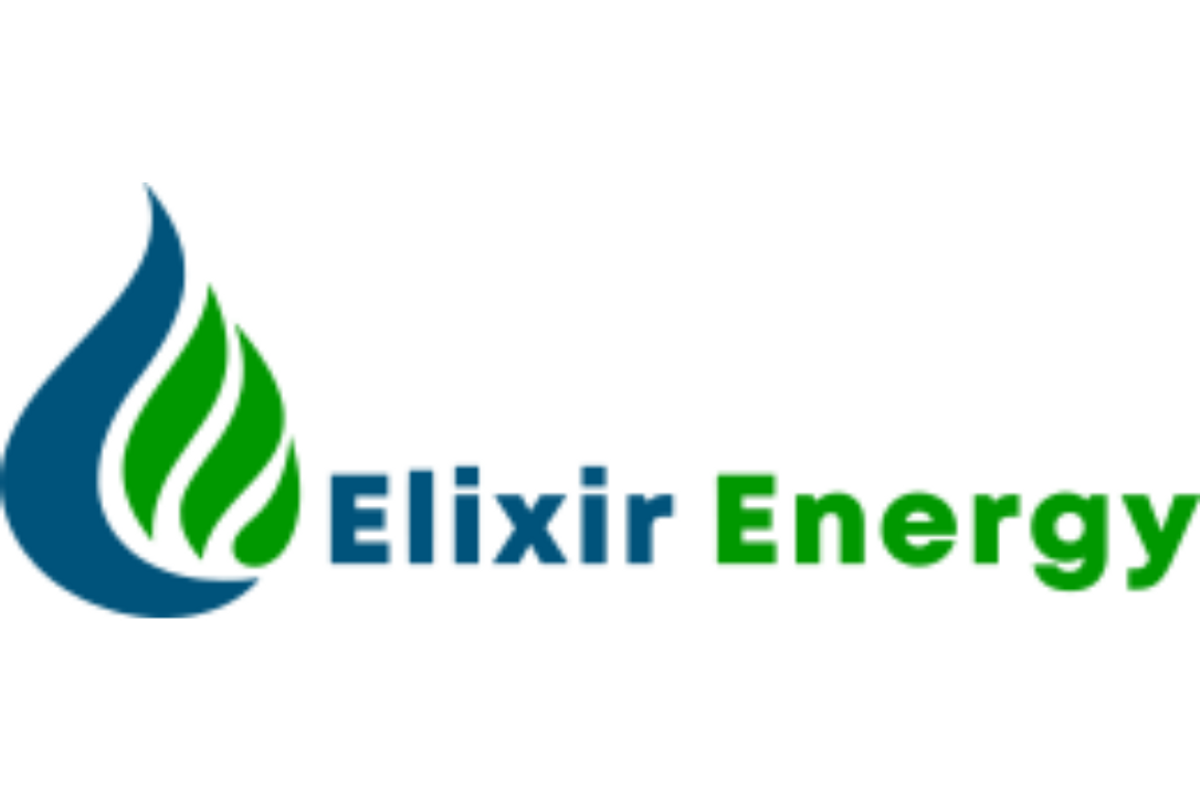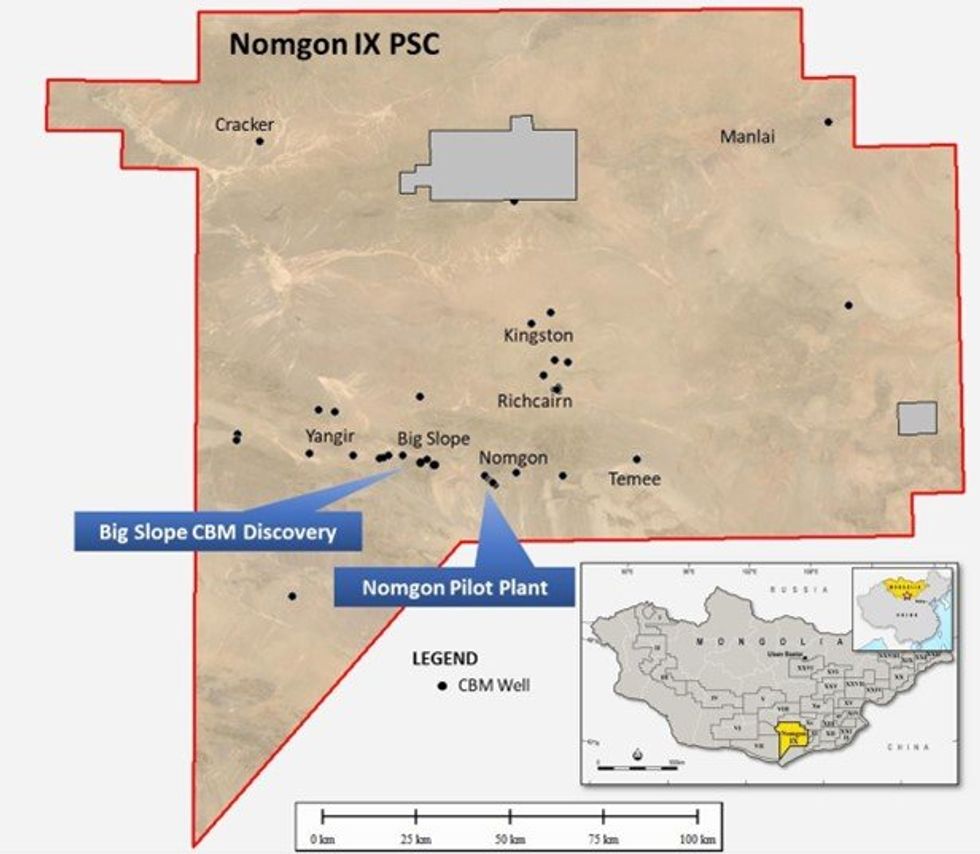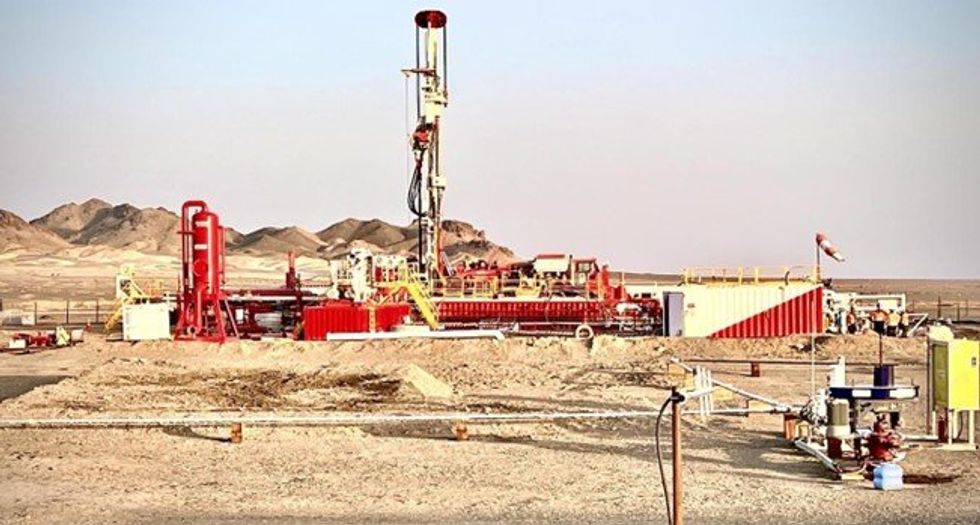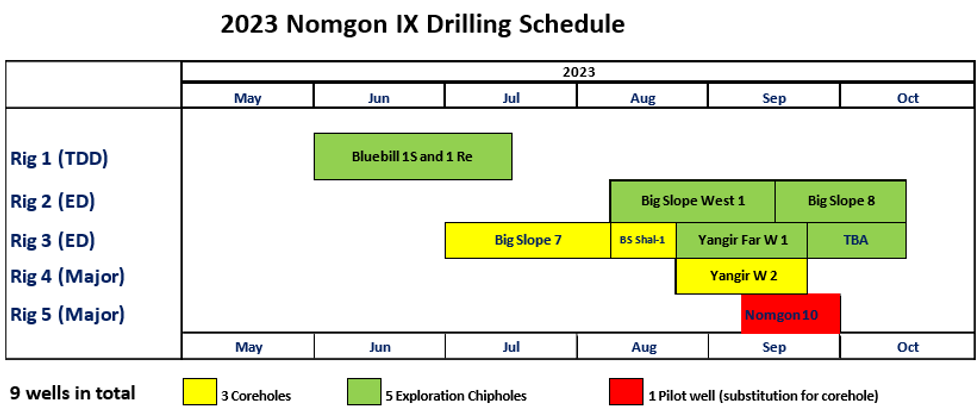
September 06, 2023
Elixir Energy Limited (“Elixir” or the “Company”) is pleased to provide an operations update on the work currently underway in its 100% owned Nomgon IX Coal Bed Methane (CBM) Production Sharing Contract (PSC) in the South Gobi Basin, Mongolia.
HIGHLIGHTS
- CBM discovery declared at Big Slope Location
- Nomgon-10 pilot well spuds
- Four drilling rigs running in the Gobi Basin for Elixir
Recent coring, desorption and testing at the Big Slope coal deposits have formally yielded a CBM gas discovery under Petroleum Resources Management System (PRMS) guidelines (Appendix 1), having proved the presence of gas saturated coal with adequate permeability.
Big Slope core holes and chip holes have intersected coal thicknesses of up to 59.5 metres, even though the full stratigraphic section is yet to be penetrated. A total of 3,510 metres has now been drilled in the Big Slope area, with a total of 259 metres of coal intersected. Elixir has measured consistent gas contents of up to 9 cubic metres per ton (on a raw gas basis) – with the expected strong correlation of increasing gas content with depth.
The most recently completed well, Big Slope Shallow-1 intersected 37 metres of coal in a well that was 321 metres deep. This measured permeability of 0.8 milliDarcies (mD) from a Drill Stem Test (DST) over a 6 metres coal seam, within an interval of 288.5 to 294.5 metres. Appraisal and testing of this area and the adjacent Yangir area continues.

Yesterday, Elixir spudded Nomgon-10. Nomgon-10 is an additional pilot well that will be connected to the Nomgon Pilot Production plant. The well is expected to take ~2 weeks to drill and should be connected and online within one month. Gas and water production from the Pilot Plant has been temporarily suspended until the simultaneous drilling operations are completed.

In total, Elixir is now operating 4 rigs in the Nomgon IX PSC, 2 with Major Drilling and 2 with Erdene Drilling. The program has been accelerated to ensure it is completed before the harsh Gobi winter begins.

Elixir’s Managing Director, Mr Neil Young, said: “Our drilling program in the Gobi is operating intensively at present and delivering strong results. We now have another formal discovery in the Big Slope area and we will continue to appraise across the key South West section of the PSC for the next few months before winter. On the Pilot side, Nomgon-10 should be online within a month and will add to the ongoing pilot data gathering process thereafter.”
Click here for the full ASX Release
This article includes content from Elixir Energy, licensed for the purpose of publishing on Investing News Australia. This article does not constitute financial product advice. It is your responsibility to perform proper due diligence before acting upon any information provided here. Please refer to our full disclaimer here.
EXR:AU
The Conversation (0)
Latest News
Latest Press Releases
Related News
TOP STOCKS
American Battery4.030.24
Aion Therapeutic0.10-0.01
Cybin Corp2.140.00